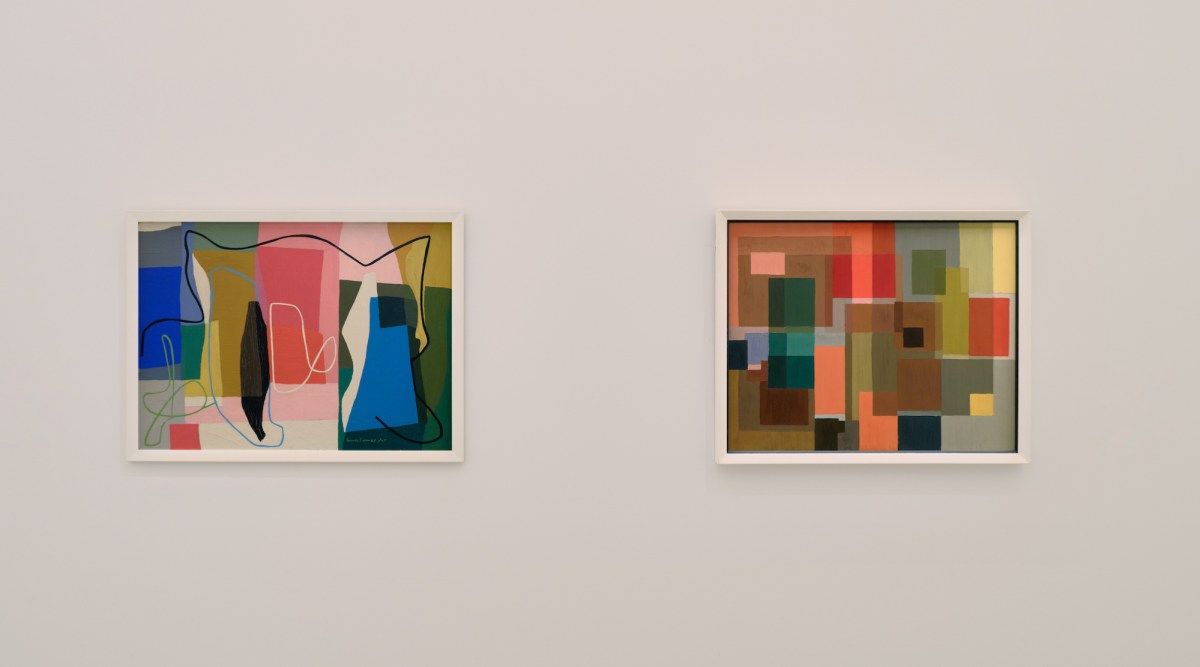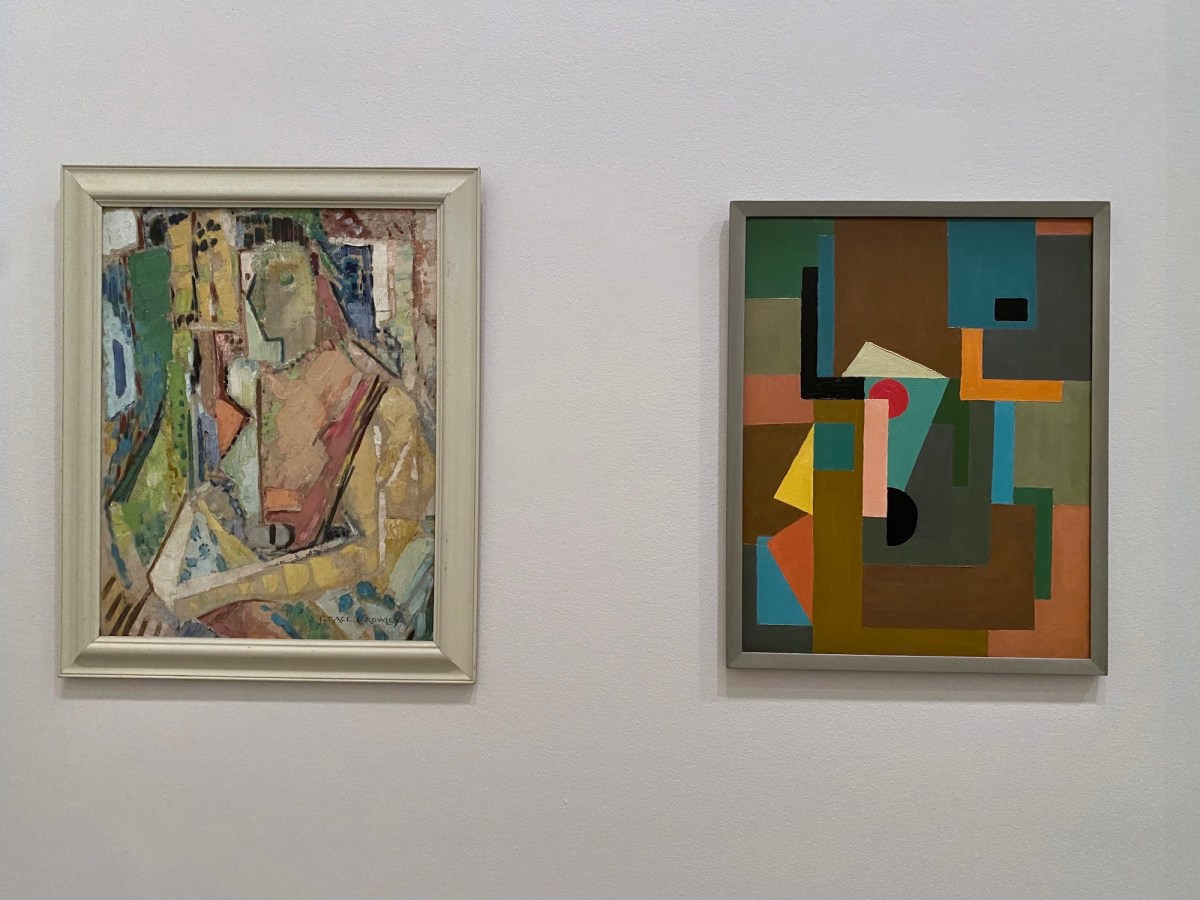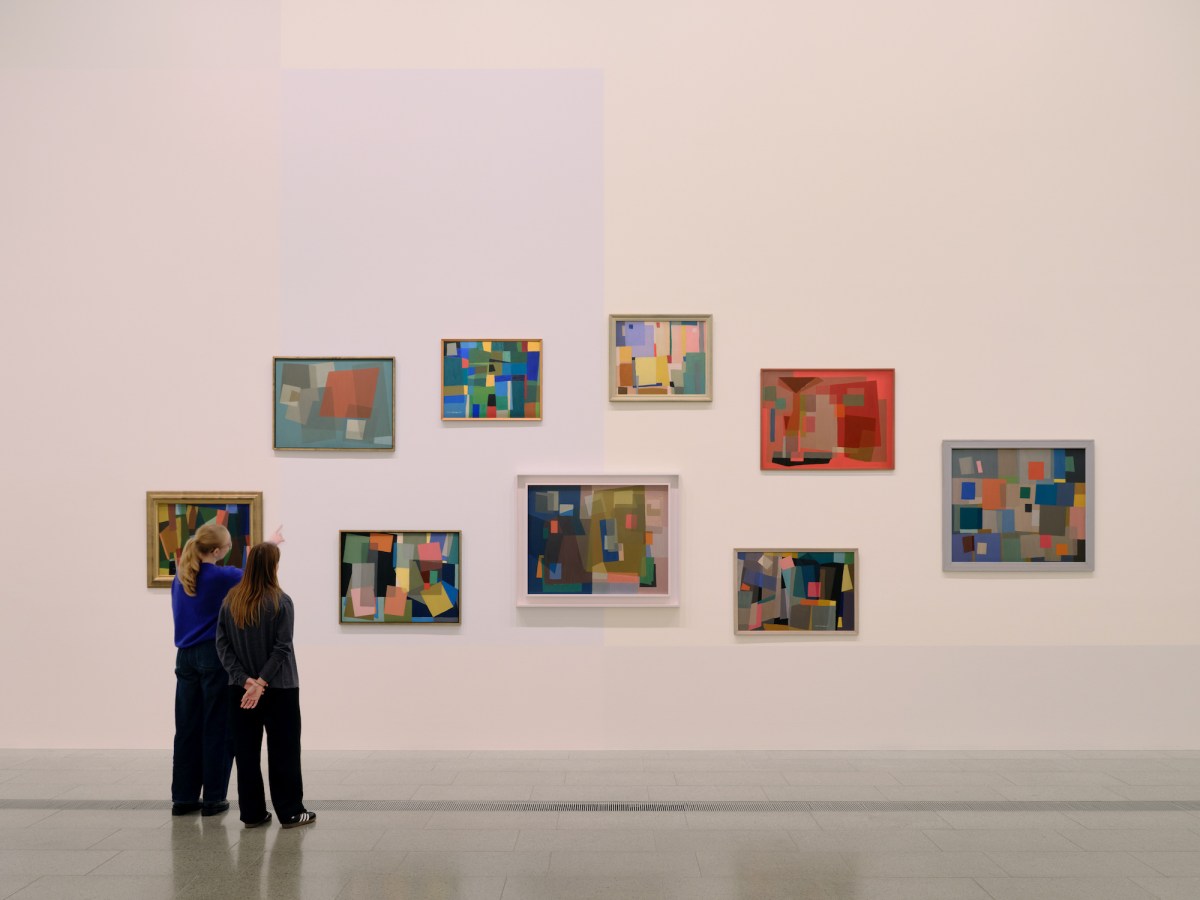While they have been presented together in group exhibitions, it is surprising that we have not seen this exhibition before – a pairing of pioneering abstract artists Grace Crowley (1890-1979) and Ralph Balson (1890-1964).
The careers of these two artists were interwoven and in sync. But their shared stylistic language was beyond mere synergies, to the point where collaboration was central to their practice. Crowley is said to have even signed Balson’s paintings for him.
That long-standing creative partnership is mapped out across more than 80 paintings and works on paper – both collection works and loans – at The Ian Potter: NGV Australia.
While revered and collected today, at the time their work had a ‘lukewarm reception’, explains the Gallery, adding that, ‘their partnership proved to be one of the most important in the history of Australian art.’
Crowley grew up in Barraba NSW and studied at Julian Ashton’s Sydney Arts School, before becoming Head Teacher in 1918. In 1926 she travelled to France to extend her studies. It was only on her return that she met Balson. He grew up in Dorset, England, and moved to Australia at 23. Contrary to Crowley, he was primarily self-taught, and enrolled in art classes in Sydney, where Crowley was one of his teachers.
The rest is history, as they say. They would go on to share four decades of creative connection.
Entering the exhibition, that connection is drawn immediately. Visitors are faced with two paintings: Grace Crowley’s Abstract painting (1947) with Ralph Balson’s Constructive painting (c. 1948). They are chromatically in sync, and both compositions are based on structural relationships of form and colour.

Sitting opposite this pairing, in contrast is a small group of paintings by Crowley made in Paris in 1928, portraits that largely demonstrate an opening up to the Cubist style she had seen abroad. It is amazing to consider them in tandem with the entry painting, and just how far that journey to abstraction was pushed.
Read: Exhibition review: Anni and Josef Albers, National Gallery of Australia
Moving deeper into the gallery, Crowley and Balson’s works are hung indeterminately – at times you wonder whose is whose. The pair were part of Australia’s first exhibition of semi-abstract painting and sculpture, Exhibition 1, held at Sydney’s David Jones Gallery in 1939.
For this exhibition, their works have been presented against walls painted with a very subtle, pastel abstract patterning. It is in the second gallery that viewers encounter a knockout pairing of Balson’s painting Construction in green (1942) with The Construction – Transparent Planes (1942). These were painted a year after his solo show at Anthony Hordern’s Fine Art Galleries and were the first works he painted in the new Constructivist style. Seven paintings from that show are on display in this space.
On an end wall, there is a salon hang of later works by Balson that continue this exploration. In these, Balson used a metallic paint base in a first in Australia, adding to their lustre.
Opposite, is Crowley’s groundbreaking, semi-abstract work, Portrait (1939), which has been described by curator Beckett Rozentals as ‘anticipat[ing] pure abstraction in its total rejection of traditional modes of rendering realistic form and space’.
It is hung next to Balson’s Constructive painting (1941). There is a great story behind these paintings. When the NGV conservators were preparing Crowley’s painting for this exhibition, they discovered that the backing board was actually a painting by Balson. Given that it post-dates Crowley’s work, this suggests that hers was bumping around the studio for a while. To see them in tandem here is a wonderful rare moment.

That connection – both creatively and literally – is again played out in the end gallery, where viewers are treated to what is perhaps the highlight of the exhibition. Two double-sided paintings sit on pedestals at waist height. On one side is the work of Crowley – Linear Rhythm – and on the other is Balson’s 1946 Constructive Painting. In a delightful curiosity the Crowley piece is upside down.

Overall, the exhibition beautifully charts two artists’ journey through the many nuances of abstraction – from cubist to constructivism to non-objective painting – radical leaps for their time. It is a wonderful reminder of the role they both played in shaping the modern art movement in Australia.
And, while the exact nature of their relationship remains a mystery, their commitment and support of each other was unwaivering. This exhibition is a must for any painter or lover of mid-century design and abstraction.
Grace Crowley & Ralph Balson
The Ian Potter Centre: NGV Australia at Federation Square
Melbourne
23 May – 22 September 2024
Free





